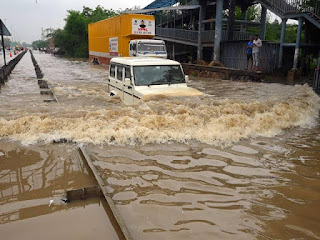Mission Chandrayan 2
India's second lunar exploration mission, Chandrayaan-2, was launched by the Indian Space Research Organisation (ISRO) on July 22, 2019. The mission's goal was to investigate the south polar region of the moon and advance our knowledge of its surface, geology, and potential presence of water.
Chandrayaan-2 was made up primarily of three parts:-Orbiter:- The orbiter stayed in lunar orbit and carried out ongoing research of the lunar surface, its makeup, and the exosphere, a thin layer of gas that surrounds the moon.
The Pragyan rover- would be deployed by the Vikram lander after a soft landing on the lunar surface close to the south pole
Vikram Lander: The Vikram lander was designed to make a soft landing on the lunar surface near the south pole and deploy the Pragyan rover.
The Chandrayaan 2 mission
Indian Space Research Organisation (ISRO) is a space agency.
Date of Launch: July 22, 2019
Geosynchronous Satellite Launch Vehicle Mark III - Mission 1 (GSLV Mk III-M1)Objectives: aChandrayaan 2's main goals were as follows:
a.Examine the lunar surface's makeup.
b. Look for water ice on the Moon, particularly near the south pole.Examine the exosphere of the Moon and its changes.
c.Examine the exosphere of the Moon and its changes.
d. Produce thorough 3D models of the lunar surface.
e. Calculate the impact of solar X-rays on the Moon.
Components:
The orbiter was created to orbit the Moon and conduct remote sensing research. It carried eight instruments for science.
The Vikram lander was designed to land gently on the lunar surface close to the south pole. It carried equipment for doing research on the Moon's surface.
Landing attempt:-
On September 7, 2019, the Vikram lander made an attempt at a soft lunar landing. Unfortunately, the lander's communication was cut off just before it was supposed to touch down, and its specific location on the lunar surface was not known for some time.
Success of the Orbiter: Despite the lander's failure, the Chandrayaan 2 orbiter kept operating well and delivered important scientific data and photos of the Moon. It moved around the Moon in a polar orbit
Purpose of chandrayan 2
Chandrayaan 2's mission was to study the Moon's south polar region and carry out a number of scientific studies. The following were the mission's main goals:
Chandrayaan 2's scientific instruments were used to analyse the lunar surface's composition, elemental distribution, and mineral composition.
Water Ice Detection: One of the main goals was to look for water ice on the Moon, especially in the areas that were permanently in shadow near the south pole. Water is essential for hypothetical lunar expeditions since it may be used for a variety of things, including providing for the needs of human explorers
The mission's goal was to survey the surface of the Moon and produce accurate 3D maps in order to better comprehend its geological past.
Chandrayaan 2 was designed to research the exosphere, which is the thin and sparse atmosphere that surrounds the lunar surface.
Solar X-ray emissions and their effects on the Moon's surface were to be measured as part of the mission.
The GSLV Mk III-M1 was the launch vehicle utilised for Chandrayaan 2. India's most potent launch vehicle, the Geosynchronous Satellite Launch Vehicle Mark III (GSLV Mk III), is capable of launching large payloads into orbit. The "M1" prefix often designates a particular launch vehicle or mission configuration. Due to Chandrayaan 2's need for a bigger payload capacity to reach the Moon, the GSLV Mk III was chosen for the mission.
Numerous scientists and engineers from the Indian Space Research Organisation (ISRO) worked on the Chandrayaan 2 mission. It is a team effort, with numerous individuals and groups contributing to different facets of the objective. The mission's senior leaders as of my most recent update in September 2021 were:
Dr. K. Sivan is a space scientist from India and the head of ISRO. His full name is Kailasavadivoo Sivan. He was instrumental in managing the Chandrayaan 2 mission.
Dr. M. Annadurai is a scientist at ISRO who oversaw the development of the Chandrayaan 1 and Chandrayaan 2 missions.
Apart from the important people mentioned above, there were several project managers, scientists, and engineers who oversaw the orbiter, lander, rover, and scientific instrument teams during the Chandrayaan 2 mission.
It's critical to recognise that the accomplishment of space missions is the outcome of the combined efforts of a sizable team of scientists, engineers, and support personnel working towards a single objective. Only a small portion of the major players in the Chandrayaan 2 expedition are represented by the names mentioned above
.







Very well researched
ReplyDeleteNyc
ReplyDeleteNicely explained
ReplyDeleteNice topic. Well explained.
ReplyDeleteThis is what I was looking for.
ReplyDeleteVery helpful
Thank you. That was concise and simple.
ReplyDelete